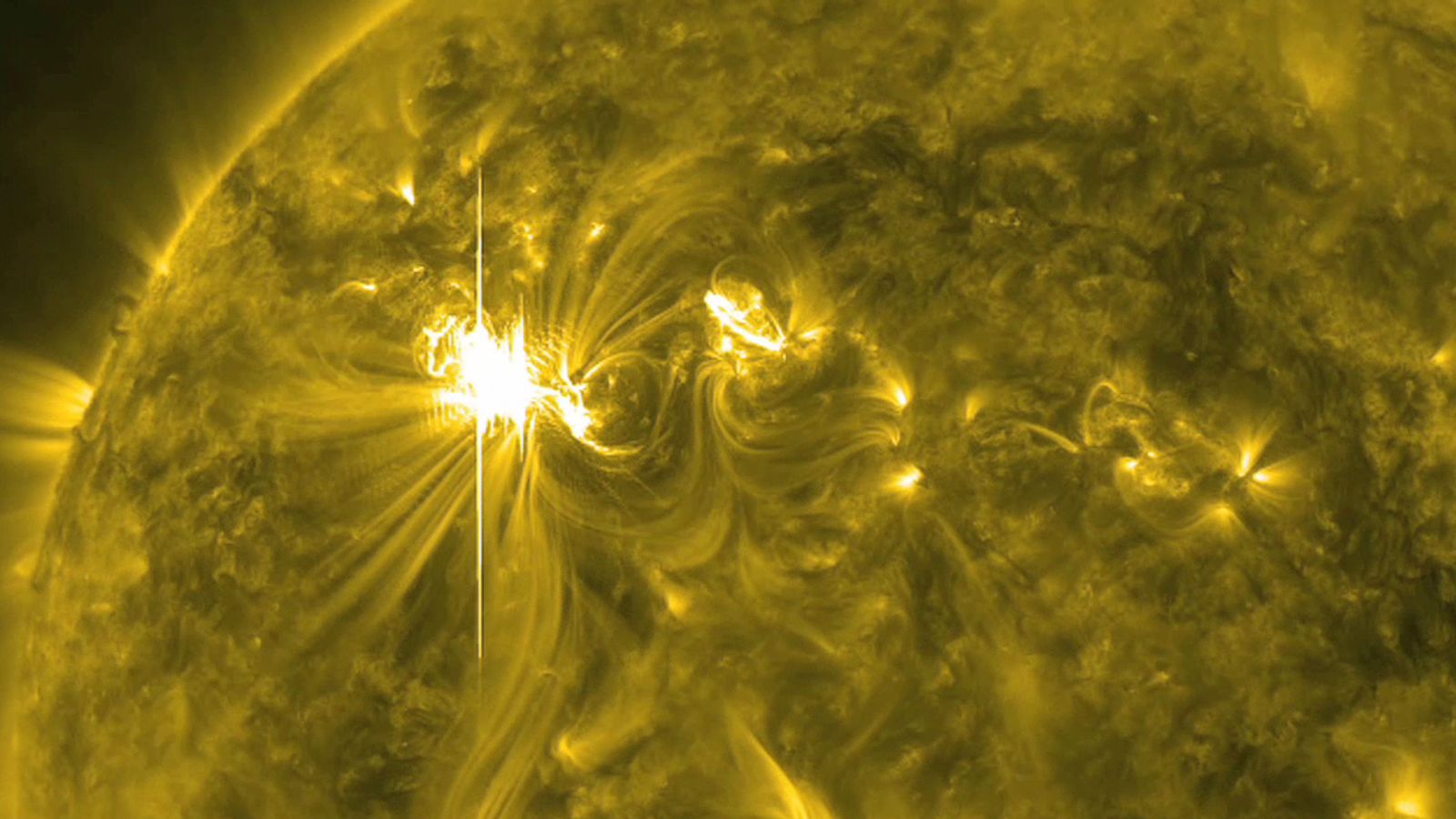A geomagnetic storm warning has been issued after 17 solar flares were detected erupting from a single sun spot, some of them while it was pointing at Earth.
The US space weather prediction centre said a G3 geomagnetic storm watch is now in effect following what scientists call a “cannibal coronal mass ejection (CME)” being launched towards Earth.
A cannibal CME takes place when a second larger flare follows an initial one and ends up sweeping up the material in front of it.
This results in “tangled magnetic fields and compressed plasmas that can spark strong geomagnetic storms” according to SpaceWeather.com, meaning that the auroras could be seen closer to the equator than usual.
“Sightings are possible as far south as southern Scotland and Northern Ireland,” according to the Met Office.
Solar activity has been observed rising and falling naturally every 11 years, although not quite like clockwork, and astronomers believe we are now entering a period of increased solar activity which could peak in 2025.
A new family of sunspots, discovered on the surface of our star in 2020, unleashed the biggest solar flare that scientists have seen since 2017.
Earlier this year SpaceX confirmed that a geomagnetic storm destroyed most of the Starlink satellites it had attempted to get into orbit during a launch.
The storm, which was caused by solar activity, made the Earth’s atmosphere warm and expand.
The denser atmosphere at the initial orbital altitude for the satellites caused atmospheric drag to increase up to 50% higher than SpaceX had seen in previous launches, the company said, meaning the satellites ended up plummeting back to Earth and burning up on re-entry.
“Impacts to technology from a G3 storm generally remain small,” said the US National Oceanic and Atmospheric Administration (NOAA) which monitors space weather.
Fortunately astronomers do not expect the flare to cause major disruption as per the Carrington Event, believed to be the largest solar storm ever recorded, which hit Earth in 1859.
The Carrington Event left an aurora visible across the sky, even in latitudes much closer to the equator, and was described in contemporary reports as even brighter than the light of a full moon.
It caused the failure of telegraph systems all across Europe and North America, and a similar storm today could cause trillions of dollars in damage globally.

